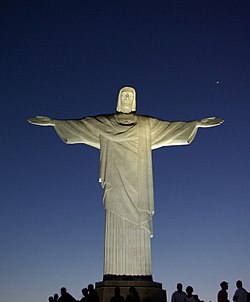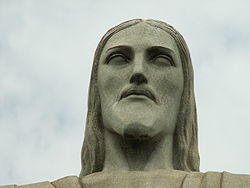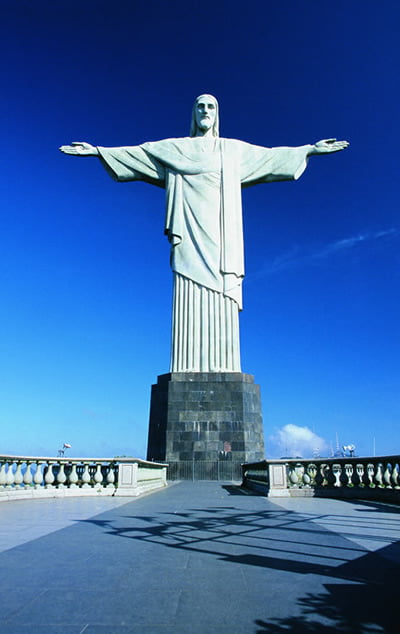The idea of building a large statue atop Corcovado was first suggested in the mid-1850s, when Catholic priest Pedro Maria Boss requested financing from Princess Isabel to build a large religious monument. Princess Isabel did not think much of the idea and it was dismissed in 1889, when Brazil became a republic with laws mandating the separation of church and state. The second proposal for a landmark statue on the mountain was made in 1920 by the Catholic Circle of Rio. The group organized an event called Semana do Monumento ("Monument Week") to attract donations and collect signatures to support the building of the statue. The donations came mostly from Brazilian Catholics. The designs considered for the "Statue of the Christ" included a representation of the Christian cross, a statue of Jesus with a globe in his hands, and a pedestal symbolizing the world. The statue of Christ the Redeemer with open arms, a symbol of peace, was chosen.
Local engineer Heitor da Silva Costa designed the statue; it was sculpted by Polish-French sculptor Paul Landowski.
The face of the statue was created by Romanian sculptor Gheorghe Leonida was born in Galati, Romania in 1893. He studied sculpture at the Fine Arts Conservatory in Bucharest, then he continued his studies for three years in Italy where he gained also a prize with his sculpture “Reveil” (the Dream). Gheorghe Leonida lived then in Paris where his work “Le Diable” (the Devil) was awarded the Grand Prize. Becoming famous in France as portraitist, he was included by Paul Landowski in the team that started working at the gigantic statue from Rio de Janeiro in 1922. Gheorghe Leonida contributed to portraying Jesus Christ’s face, which made him famous.
A group of engineers and technicians studied Landowski's submissions and the decision was made to build the structure out of reinforced concrete (designed by Albert Caquot) instead of steel, more suitable for the cross-shaped statue.The outer layers are soapstone, chosen for its enduring qualities and ease of use. Construction took nine years, from 1922 to 1931 and cost the equivalent of US$250,000 ($3,300,000 in 2014). The monument was opened on October 12, 1931. The statue was meant to be lit by a battery of floodlights triggered remotely by shortwave radio pioneerGuglielmo Marconi, stationed 5,700 miles (9,200 km) away in Rome, but poor weather affected the signal and it had to be lit by workers in Rio.
In October 2006, on the statue's 75th anniversary, Archbishop of Rio Cardinal Eusebio Oscar Scheid consecrated a chapel (named after the patron saint of Brazil—Nossa Senhora Aparecida, or "Our Lady of the Apparition,") under the statue. This allows Catholics to hold baptisms and weddings there.
The statue was struck by lightning during a violent electrical storm on Sunday, February 10, 2008, and suffered some damage on the fingers, head and eyebrows. A restoration effort was put in place by the Rio de Janeiro state government to replace some of the outer soapstone layers and repair the lightning rods installed on the statue. It was again damaged by lightning on Thursday, January 17, 2014, where a finger on the right hand was dislodged.
On April 15, 2010, graffiti was sprayed on the statue's head and right arm. Mayor Eduardo Paes called the act "a crime against the nation" and vowed to jail the vandals, even offering a reward of R$ 10,000 for any information that might lead to an arrest. The Military Police eventually identified house painter Paulo Souza dos Santos as the suspect of the act of vandalism.








